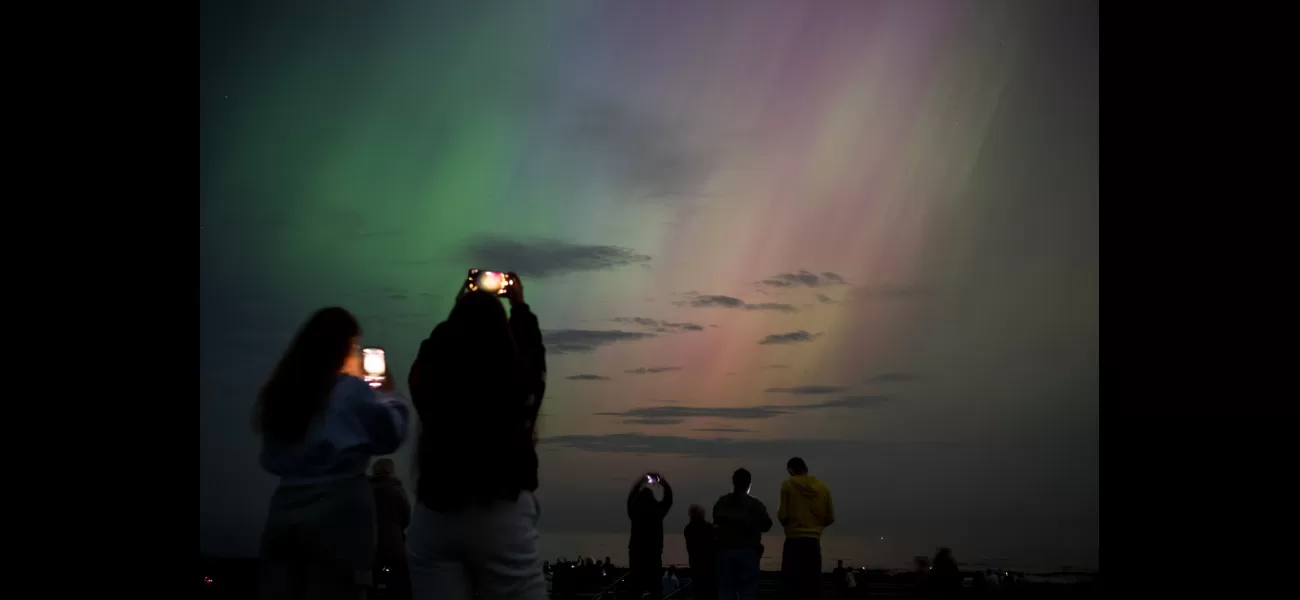UK residents may have the chance to see the Northern Lights this week, with the possibility of them being visible from tonight.
The lights may appear tonight.
July 24th 2024.

Many people make the journey to St Mary's lighthouse in Whitley Bay, hoping to catch a glimpse of the stunning aurora borealis. And it seems that this week, Brits may be in luck as a geomagnetic storm is making its way towards Earth. The lights could potentially be visible as early as tonight, with the Met Office confirming the possibility of auroral displays. However, it's important to note that these displays will only be visible in certain areas of the UK.
According to the Met Office, the forecast includes two Coronal Mass Ejections, which could lead to strong geomagnetic storm conditions on Wednesday, July 24th. This means that there is a chance of seeing the Northern Lights in Northern Ireland, northern England, and other areas with similar geomagnetic latitudes. However, the near-full moon and limited hours of darkness may impede the visibility of the light displays.
SpaceWeatherLive has predicted a Level 6 storm, with zero being the lowest and nine being the highest. This is significant as the last time the UK experienced such a strong storm was 20 years ago. In May, the aurora lights were visible across the country, even in London where light pollution is usually a hindrance.
If you're hoping to catch a glimpse of this natural wonder, your best bet is to head to northern Scotland or Northern Ireland. While there is a slight chance of seeing the lights in northern England or north Wales, the chances are much lower. In May, the Northern lights were spotted above Manstone Rock on the Stiperstones in Shropshire, as well as in other areas such as Whitley Bay, Essex, Cambridgeshire, and Berkshire.
But have you ever wondered what exactly causes these beautiful light displays? Well, it all starts with charged particles from sunspots colliding with gases in the Earth's atmosphere around the magnetic poles. Usually, this activity occurs in the northern hemisphere, but when it's particularly strong, it can cover a larger area and be visible further south.
In May, solar flares were responsible for the stunning lights, which can also cause radio blackouts in the UK. Ravindra Desai, an assistant professor of physics at the University of Warwick, explained that while the active region of the Sun has now rotated away from the Earth, energetic particles from the flare can still reach us and cause disruptions to radio signals and damage to satellites. Dr Desai also mentioned that the active region may persist for two weeks or longer, meaning that there is an elevated chance of further major geomagnetic storms and aurora over the UK in the coming weeks. So keep your eyes peeled and don't miss out on this amazing natural phenomenon.
According to the Met Office, the forecast includes two Coronal Mass Ejections, which could lead to strong geomagnetic storm conditions on Wednesday, July 24th. This means that there is a chance of seeing the Northern Lights in Northern Ireland, northern England, and other areas with similar geomagnetic latitudes. However, the near-full moon and limited hours of darkness may impede the visibility of the light displays.
SpaceWeatherLive has predicted a Level 6 storm, with zero being the lowest and nine being the highest. This is significant as the last time the UK experienced such a strong storm was 20 years ago. In May, the aurora lights were visible across the country, even in London where light pollution is usually a hindrance.
If you're hoping to catch a glimpse of this natural wonder, your best bet is to head to northern Scotland or Northern Ireland. While there is a slight chance of seeing the lights in northern England or north Wales, the chances are much lower. In May, the Northern lights were spotted above Manstone Rock on the Stiperstones in Shropshire, as well as in other areas such as Whitley Bay, Essex, Cambridgeshire, and Berkshire.
But have you ever wondered what exactly causes these beautiful light displays? Well, it all starts with charged particles from sunspots colliding with gases in the Earth's atmosphere around the magnetic poles. Usually, this activity occurs in the northern hemisphere, but when it's particularly strong, it can cover a larger area and be visible further south.
In May, solar flares were responsible for the stunning lights, which can also cause radio blackouts in the UK. Ravindra Desai, an assistant professor of physics at the University of Warwick, explained that while the active region of the Sun has now rotated away from the Earth, energetic particles from the flare can still reach us and cause disruptions to radio signals and damage to satellites. Dr Desai also mentioned that the active region may persist for two weeks or longer, meaning that there is an elevated chance of further major geomagnetic storms and aurora over the UK in the coming weeks. So keep your eyes peeled and don't miss out on this amazing natural phenomenon.
[This article has been trending online recently and has been generated with AI. Your feed is customized.]
[Generative AI is experimental.]
0
0
Submit Comment





